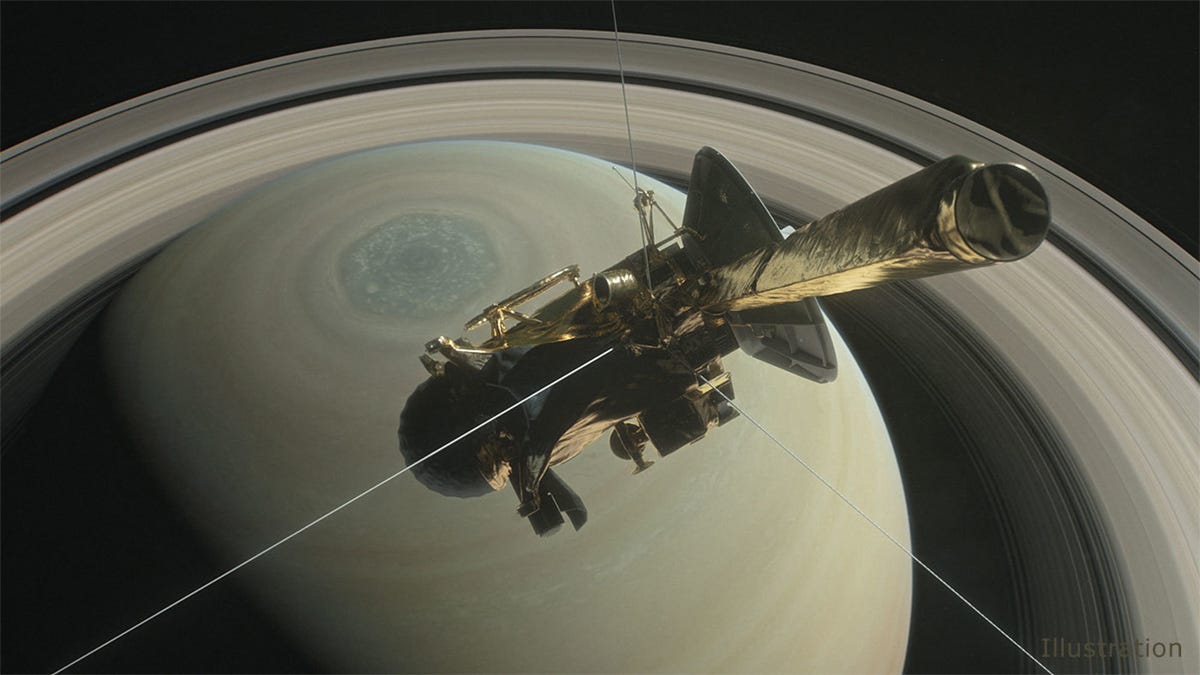Cassini probe gives its swan song with final Saturn mission
The spacecraft that gave us so much information about Saturn has started its final dives -- in between Saturn's rings.
After 13 years of valuable data collection around Saturn and its moons, NASA 's Cassini spacecraft is almost out of fuel and ready for retirement. Before it makes its final magnificent fall into Saturn's mysterious depths, however, it's going to spend a few months going where no spacecraft has gone before.
After its final flyby of Saturn's hazy moon Titan, Cassini took its first historic dive in the space between Saturn and its rings at 2 a.m. PDT on April 26, 2017, the first in the mission named, appropriately, Grand Finale. During this mission, Cassini will perform 22 such flybys in total, coming closer to Saturn than any spacecraft before it, just 64,000 kilometres (40,000 miles) from its centre.
During these daring swoops, Cassini will make detailed maps of Saturn's gravity and magnetic fields, and take a much closer look at Saturn's rings, trying to determine their mass. It will also take photographs of Saturn from the most intimate vantage point yet.
NASA doesn't currently have contact with Cassini as it performs this manoeuvre. It's expected that it will resume contact with Earth at 11:50 p.m. PDT at the earliest. In the meantime, we'll be waiting with bated breath -- Cassini could be knocked out of action by a piece of debris, as it flies close to the rings.
"Cassini has taught us about the weird and wonderful hexagon-like structures at Saturn's poles, the prebiotic chemistry in the atmosphere of a dynamic Titan with rain, rivers and lakes, and with the Huygens probe, provided the first amazing close-up images of Titan's surface," said Luke Davies, John Stocker Fellow at the International Centre for Radio Astronomy Research, University of Western Australia.
"One of its most impressive studies has been into Saturn's rings, showing them as dynamic systems which have changed and evolved over Cassini's 10 year mission -- even seeing the possible birth of a new moon," said Davies. "As Cassini begins its long multi-orbit decent to Saturn, it will study these rings in even greater detail before eventually giving us a fleeting, but invaluable, glimpse of the Saturnian atmosphere."
This final flight will take place on September 15, 2017.
The initial images from this first flyby between Saturn and its rings will start arriving no earlier than 12:30 a.m. PDT, April 27. You can keep an eye out for them on the Cassini Twitter account.
Tech Enabled: CNET chronicles tech's role in providing new kinds of accessibility.
Technically Literate: Original works of short fiction with unique perspectives on tech, exclusively on CNET.


